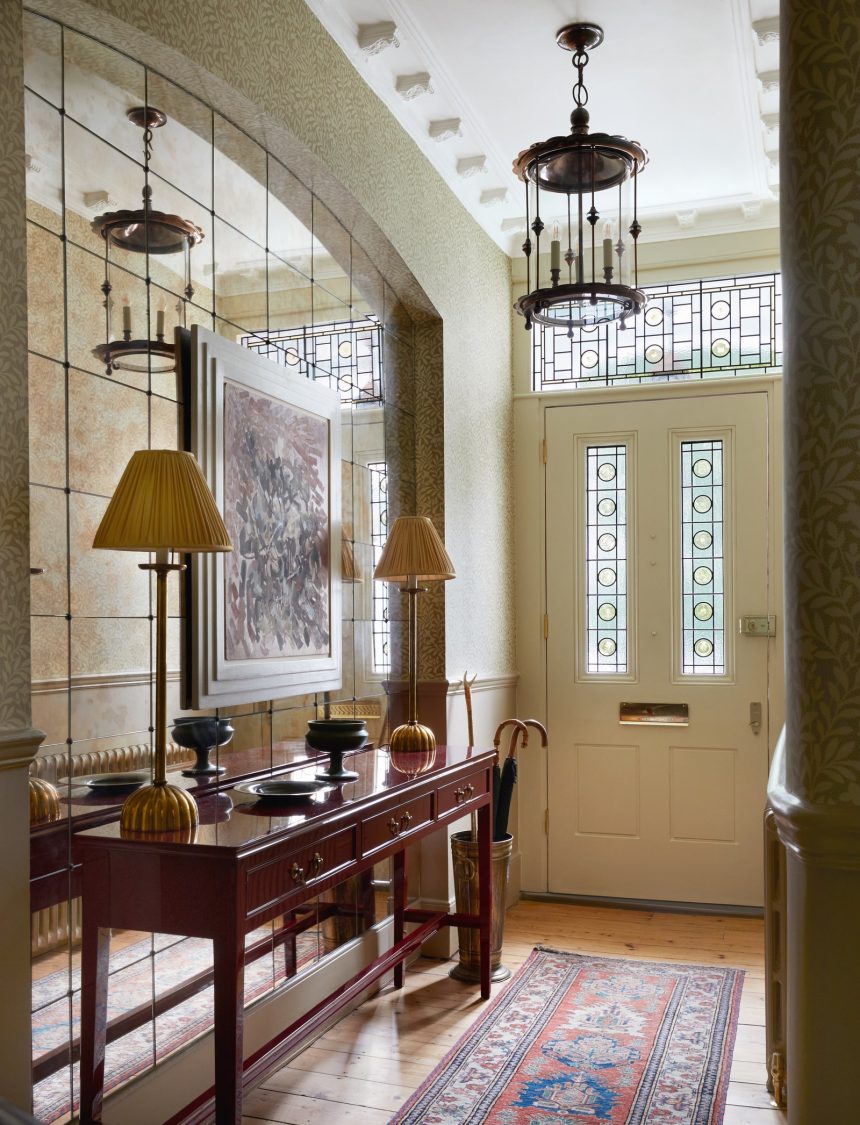You may think that stained glass primarily belongs in churches and religious buildings. Though this is where the art form’s origins lie, it is certainly not confined to them anymore. Increasingly, we are seeing the small panes of coloured glass appearing in our interiors, chosen for their impressive craftsmanship, jewel-like appearance and ability to transform a plain window (or boring view) into something rather magnificent.
The earliest examples of stained glass appear in mediaeval churches, where the fragments of glass would be arranged to depict bible stories for illiterate congregations. Over time they made their way into secular buildings and grand private residences. Though many medieval stained glass windows were destroyed during the Reformation, there are still plenty of historical and some more modern examples to be found: it’s used throughout Canterbury Cathedral and London’s Westminster Abbey, and celebrated architect Charles Rennie Mackintosh often incorporated stained glass into his designs, such as The Glasgow School of Art.
By the Victorian era they started to appear in smaller, private homes. Normally you’d find a pane or two on front doors, having the dual purpose of filling the hallway with an atmospheric light while obscuring the inside of the house to nosy onlookers (this, incidentally, also makes it a great choice for the bathroom).
The popularity of stained glass can be traced concurrently with design periods: the Arts and Crafts era of the late 19th century, which emphasised craftsmanship, favoured the art. It was closely followed by Art Nouveau, when Tiffany Lamps were all the rage. The rise of Modernism in the 20th century saw a decline in the use of stained glass, and though it never disappeared altogether, more and more contemporary designers are rediscovering how elegantly a stained glass pane can enhance a space.









